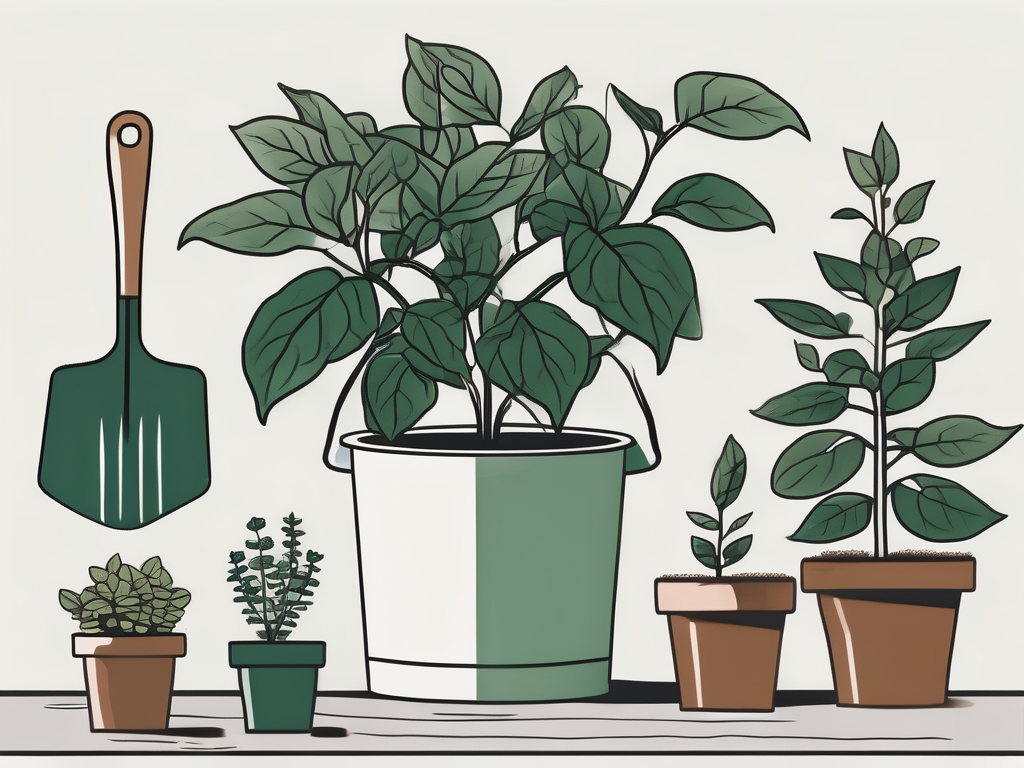
Dragon trees, with their striking, sword-like leaves and exotic appearance, are a favorite among plant lovers. If you've ever gazed at your dragon tree and wished for more of its beauty around your home, propagation might just be your next big adventure. Not only does this process let you expand your green family, but it’s also a rewarding way to connect with nature.
This guide will walk you through the steps of propagating a dragon tree, offering tips to ensure your new plants thrive. Whether you're a seasoned plant parent or just getting started, you'll find everything you need right here to grow your own dragon forest.
Understanding Your Dragon Tree
Before we dive into the nitty-gritty of propagation, it's useful to get to know your dragon tree a bit better. Officially named Dracaena marginata, the dragon tree is famous for its tough, resilient nature. Native to Madagascar, these plants can handle a bit of neglect, making them ideal for busy homes.
Dragon trees are characterized by their slender trunks and spiky, variegated leaves that often boast a red or purple edge. They can grow quite tall, reaching up to six feet indoors, and even taller outside in warm climates. In terms of care, they prefer bright, indirect sunlight but can tolerate lower light conditions. They like their soil to dry out between waterings, which means they won't mind if you occasionally forget to water them.
Now that we've covered what makes a dragon tree tick, let's get into how to create more of these remarkable plants through propagation.
When to Propagate
Timing is everything in the plant world, and propagation is no exception. For dragon trees, the best time to propagate is during their active growing season, which typically falls in spring or early summer. The warmer temperatures and increased daylight encourage growth, giving your cuttings the best chance to root and flourish.
That said, if you’re eager to get started and it’s not quite spring, you can still give it a shot. Just keep in mind that it might take a little longer for the cuttings to root in cooler conditions. If you're in a colder climate or it’s the middle of winter, consider waiting until your plant is naturally waking up from its dormant phase.
Remember, patience is key. With the right timing, your efforts will be rewarded with new, thriving plants.
Materials You'll Need
Before you start propagating, gather all the materials you'll need. Having everything ready will make the process smoother and more enjoyable. Here's a quick checklist of the essentials:
- Sharp, clean pruning shears: A clean cut is crucial to avoid damaging the plant or introducing disease.
- Small pots or containers: These will house your cuttings while they root.
- Well-draining potting soil: A mix specifically for succulents or cacti works well, as it drains quickly.
- Rooting hormone (optional): This can encourage quicker root development.
- Watering can or spray bottle: You'll need to keep the soil moist but not soggy.
- Plastic bag or clear plastic container: These create a mini greenhouse effect, locking in humidity.
Once you’ve got your tools ready, you’re all set to start the propagation process.
Step-by-Step: Taking Cuttings
With your tools and materials in hand, it’s time to take cuttings from your dragon tree. This is perhaps the most crucial step in propagation, so follow these guidelines for the best results.
- Choose a healthy stem: Look for a stem that is at least 8 inches long and has several healthy leaves. Avoid any stems that look diseased or damaged.
- Make the cut: Use your sharp, clean pruning shears to cut the stem at a 45-degree angle. This angle increases the surface area for root growth.
- Trim the leaves: Remove the lower leaves from the stem, leaving only a few at the top. This reduces moisture loss and focuses the plant's energy on root development.
- Optional - Dip in rooting hormone: If you're using rooting hormone, dip the cut end of the stem into the powder or gel. This can help stimulate faster root growth, but it’s not essential.
Now that you have your cuttings, it’s time to move on to the next phase: getting them to root.
Rooting Your Cuttings
Rooting your dragon tree cuttings is where the magic happens. With a little patience and care, you’ll see new roots forming in no time. Here's how to do it:
- Prepare the pot: Fill your small pots or containers with well-draining potting soil. Make sure the soil is slightly moist but not soggy.
- Plant the cuttings: Insert the cut end of the stem into the soil, about 2 inches deep. Firm the soil around the base to ensure the cutting stands upright.
- Create a humid environment: Cover the cutting with a plastic bag or place the entire pot in a clear plastic container. This traps humidity, which is crucial for root development.
- Find the right spot: Place the pots in a warm area with bright, indirect light. Avoid direct sunlight, as it can scorch the cuttings.
- Water sparingly: Keep the soil moist but not waterlogged. Overwatering can cause rot, so be cautious.
With the right conditions, your cuttings should start developing roots in a few weeks. You can check for roots by gently tugging on the stem. If you feel resistance, it's a good sign that roots are forming.
Caring for Rooted Cuttings
Once your cuttings have rooted, it’s time to transition them into their next stage of growth. This period is vital for ensuring your new plants become strong and healthy. Here’s how to care for them:
First, gradually acclimate them to the outside environment. Start by removing the plastic cover for a few hours each day, increasing the time over a week or two. This helps them adjust to lower humidity levels.
Next, check the root development. Gently remove a cutting from its pot to inspect the roots. If they’re well-developed and filling the pot, it’s time to repot the cutting into a slightly larger container.
As you repot, use fresh potting soil and ensure the new pot has good drainage. Water the newly potted plant thoroughly, allowing excess water to drain out.
Continue providing bright, indirect light and keep a regular watering schedule. As the plant grows, you can resume regular feeding with a balanced, water-soluble fertilizer every month during the growing season.
With these care tips, your dragon tree cuttings will thrive and grow into beautiful, mature plants.
Common Issues and Troubleshooting
Like any gardening endeavor, propagation can come with its own set of challenges. Here are some common issues you might encounter and how to address them:
- Yellowing leaves: This can be a sign of overwatering. Ensure your pot has adequate drainage and allow the soil to dry out between waterings.
- Cuttings not rooting: If roots aren’t forming, check that the cuttings are receiving enough humidity and warmth. You might also try reapplying rooting hormone and replanting.
- Rotting stems: This often results from too much moisture. Remove any rotting parts and adjust your watering schedule accordingly.
By keeping an eye on these potential problems, you can troubleshoot effectively and ensure a successful propagation process.
Transplanting Your New Dragon Trees
Once your cuttings have developed strong roots and are ready for a bigger pot, it’s transplanting time. This is an exciting step, as it’s the moment your cuttings transition into full-fledged plants. Here’s how to do it:
- Choose the right pot: Select a pot that’s one size larger than the current container. It should have drainage holes to prevent waterlogging.
- Prepare the soil: Use a well-draining potting mix. You can add perlite or sand to improve drainage if needed.
- Transplant carefully: Gently remove the plant from its current pot, taking care not to damage the roots. Place it into the new pot, filling in around it with fresh soil.
- Water thoroughly: After transplanting, water the plant well, letting excess water drain away. This helps settle the soil and removes any air pockets.
Your newly transplanted dragon tree is now ready to continue its journey to maturity. Keep up with regular care, and you’ll have a beautiful, thriving plant in no time.
Integrating Dragon Trees Into Your Home Design
Dragon trees don’t just add greenery to your space—they bring a touch of elegance and drama, too. Their unique shape and vibrant foliage make them a stunning addition to any room. Here are some ideas for incorporating them into your home decor:
- Accent pieces: Place a dragon tree in a decorative pot to add a bold statement to your living room or entryway.
- Height variation: Use dragon trees of different sizes to create visual interest and depth in a corner or alongside other plants.
- Office greenery: A dragon tree can make a fantastic addition to your workspace, bringing a sense of calm and productivity.
- Bathroom beauty: These plants do well in humid conditions, so consider adding one to your bathroom for a spa-like feel.
With their striking appearance and easy care, dragon trees are perfect for adding a touch of nature to your home’s interior design.
Long-Term Care for Your Dragon Trees
As your dragon tree continues to grow, maintaining a steady care routine is essential for its long-term health. Here’s a quick refresher on keeping your plant happy and thriving:
- Light: Bright, indirect sunlight is ideal. Move the plant if you notice the leaves becoming pale or scorched.
- Watering: Allow the top inch of soil to dry out between waterings. Adjust frequency based on the season and environmental conditions.
- Feeding: During the growing season, feed your plant monthly with a balanced, water-soluble fertilizer.
- Pruning: Trim any dead or damaged leaves to encourage new growth and maintain a tidy appearance.
With consistent care, your dragon trees can bring joy and beauty to your home for many years to come.
Final Thoughts
Propagating a dragon tree is a delightful experience that allows you to expand your plant collection and share the joy with others. With patience and care, you’ll see your cuttings grow into beautiful, strong plants. Remember, every step you take in propagation is a step towards creating a thriving indoor garden.
At Cafe Planta, we're here to support your plant journey. Whether you're looking for new houseplants or need advice, we're eager to help. Feel free to reach out via email or Instagram—we love connecting with fellow plant lovers! Let's grow together and fill our homes with the beauty of nature.












